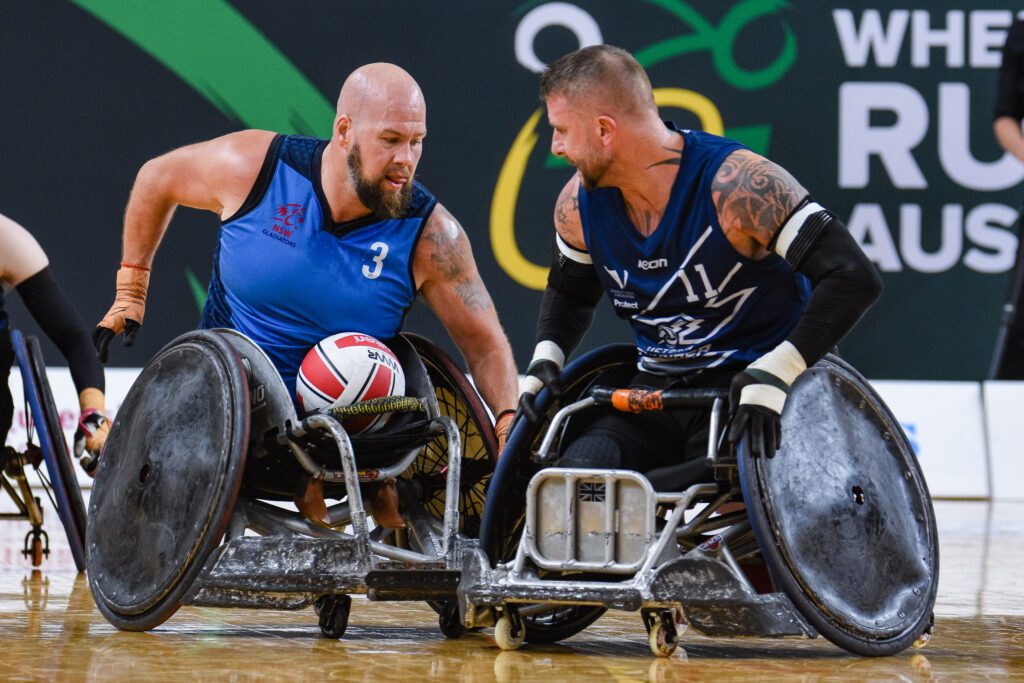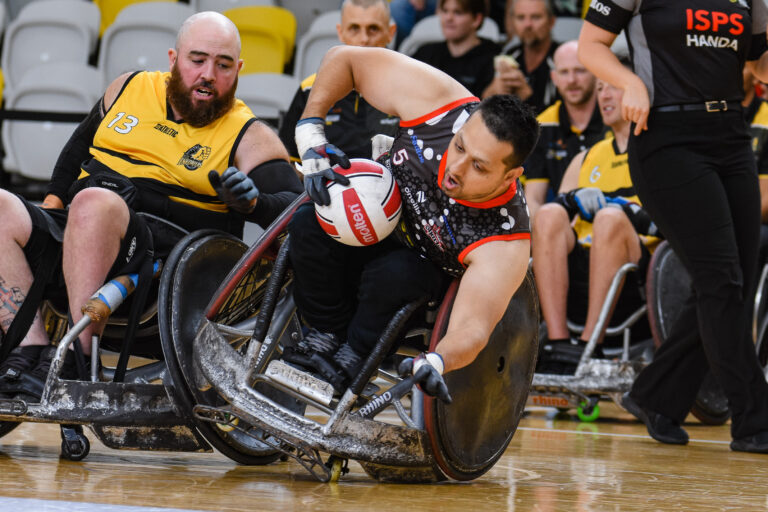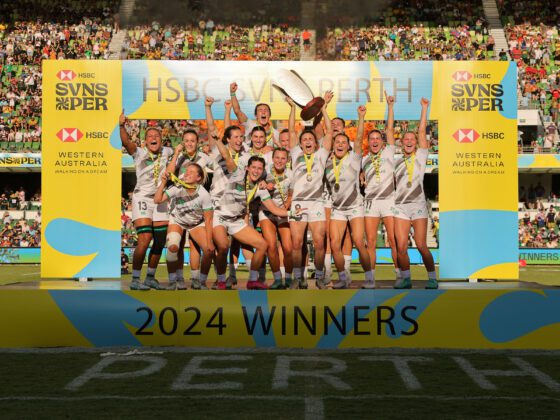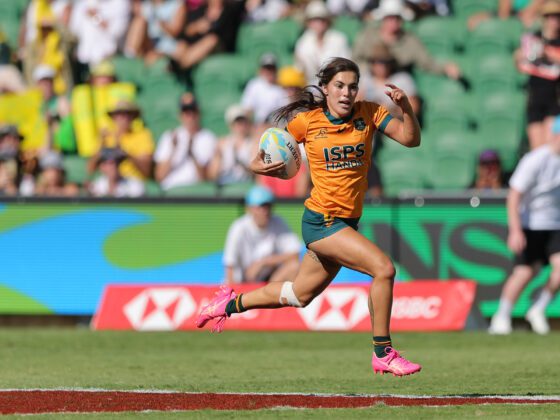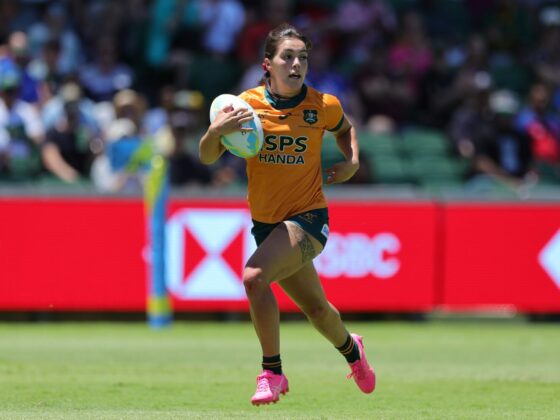An extra-time thriller has been the perfect climax to the Wheelchair Rugby National Championships as the sport plots a bold new future in Australia.
Ryley Batt and the NSW Gladiators triumphed 56-55 over the Victoria Protect Thunder in a seesawing decider worthy of an international medal final on June 4.
Fans of the sport, both old and new, were transfixed by the physicality and skill of the final after three days of competition at the Gold Coast Sport & Leisure Centre.
When Dr Haruhisa Handa announced a two-year partnership between ISPS HANDA and Rugby Australia last October, he made specific mention of what it would mean to Wheelchair Rugby Australia as well as Australia’s sevens programs.
Court signage and ISPS HANDA logos on five team uniforms reflected the major sponsorship support at the Gold Coast tournament.
“I’m extremely happy that we are supporting Wheelchair Rugby through this partnership. I have believed for a very long time in the importance of giving people with disabilities the best possible opportunity to be involved in sport,” Dr Handa said.
Both Batt, the five-time Paralympian (pictured left in bottom photo) and Victoria’s star English import Stu Robinson (right) are shining examples.
Both ended up on their backs more than once after jarring collisions that typified a full-throttle contest that was also full of tactics and teamwork.
“It’s by far one of the toughest finals I’ve ever played in,” enthused Gladiator Andrew Edmondson after the taxing grand final.
“The Victorians are such a strong team and they pushed us to the end. We fight really hard and that’s what we always do.”
The Gladiators had to. The Victorians edged them 55-53 in pool play 24 hours earlier and led 40-37 at three-quarter time in the final.
Edmondson was a key try-scorer in the final quarter which ended at 51-all.
“We had some really good experience on the court. Winning the tip and scoring first in over-time was a key so the Victorians were always scoring to catch up,” Edmondson said.
Edmondson (pictured in balancing act in this Stephen Tremain photo) is typical of those who have found such a strong sporting purpose in wheelchair rugby. He sought out the sport after breaking his neck as a 13-year-old in a bodysurfing accident at Sydney’s Coogee Beach.
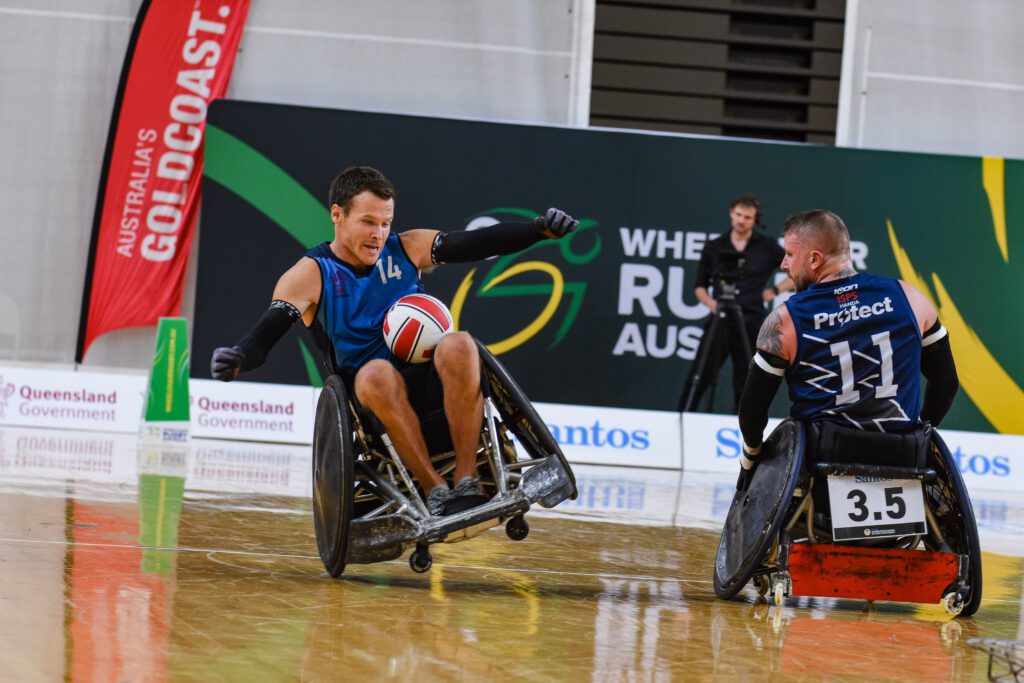
Robinson added extra quality to the championships. The word “ENGLAND” tattooed on the underside of his upper right arm spelt out where his international allegiance lies.
“Having anyone of international experience does so much for their team and the competition itself. People learn, people see and our sport grows,” said Edmondson, a Paralympian in 2016 and 2020.
“Full credit to Stu for coming down. It might encourage others to follow.
“There were some big guys on court, Ryles, Stu and Jayden Warn. We play a physical game. That’s the best part of our sport. Putting people on the floor is a great feeling, an objective.
“We’re conditioned for that physical contest. We train really hard every day, every week. We’re elite athletes. That’s what we are.”
Wheelchair rugby was an invaluable part of Robinson finding a future beyond his injuries after he lost both his legs to an explosion in Afghanistan in 2013 while serving with the Royal Air Force.
For Batt, the quality of the final exemplified something bigger.
“That was an incredible final. It’s just exciting to see the growth in wheelchair rugby and it getting faster, stronger and more physical,” Batt said.
From July 1, Wheelchair Rugby Australia will be recognized as a National Sporting Organisation (NSO) which means the sport will have a stand alone, independent and more progressive ruling body delivering the sport across Australia.
